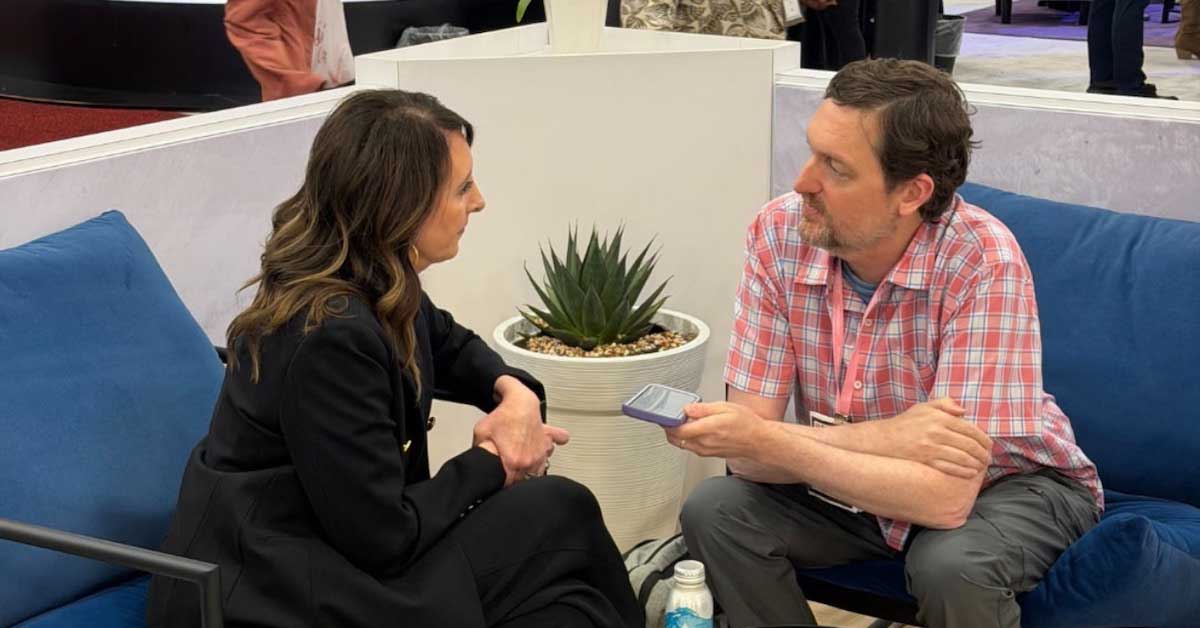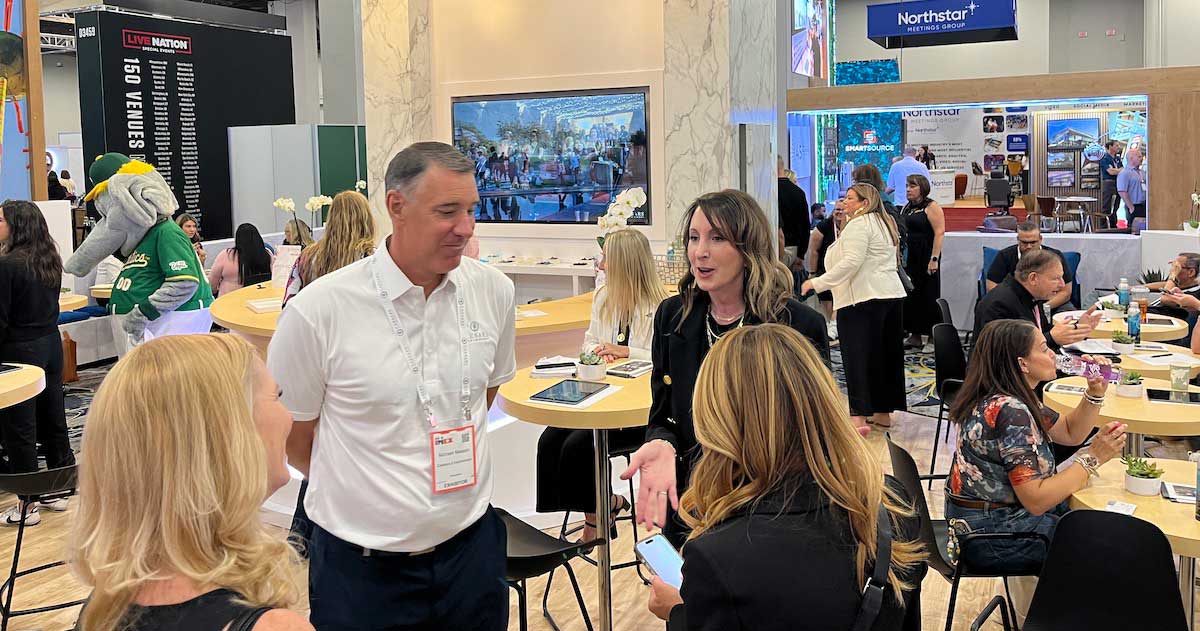“Now more than ever, it is crucial to have clearly outlined policies, protocols and communication trees in place to respond to unforeseen emergencies,” Hughes says. “Our best shot at successful risk mitigation when it comes to COVID-19 is our crisis communications plan. It must be carefully crafted to include pre-, onsite and post-event messaging that states and employs all COVID-19 health and safety best practices.”
Consider how event marketing materials are or should be changing. Those pieces of collateral will do well to showcase the new norms expected onsite so attendees understand the safeguards that’ll be in place.
“Event marketing now prominently shows images of physical distanced event setups, sanitization stations and event staff wearing gloves and masks,” Hughes says. “Attendees need to know ahead of their arrival that the venue is safe and that event organizers have all recommended health and safely protocols in place.”
Ensuring attendees are informed of safety practices and issues through all of your pre-event communication—whether associated with viral spread, potential natural disasters or violence-related security issues in the area—is essential. Uninformed attendees can unknowingly mar your event or at least the perception of it.
“I believe that the most significant security risk we have when we organize an event is the attendees’ free will,” Wohlmuth says. “[However,] I think the pandemic has actually increased communications due to confinement as well as the lack of events.”
Over the past decade, the importance of the public perception of your meeting or event (optics) has grown steadily. Prior to the pandemic, the greatest optical concern related to avoiding the appearance of extravagance. Now, however, meeting professionals have to deal with the perception that some gatherings can be super-spreader events—and no one wants to be thought of as having put a community at risk.
“It is also very important to consider responses to complaints regarding health and safety protocols,” Hughes says. “We need to be acutely aware that event-related activities can have skewed optics that guidelines are not being followed. Negative optics appearing on social media can generate negative and potentially decimating PR for an event. For example, long lineups with the appearance of a lack of social distancing of staff and/or guests not obeying guidelines. In a world already highly sensitive to ‘fake news,’ polarizing opinions on the seriousness or realness of the epidemic and varying rules from venue to venue, province to province, etc., negative PR exposure can be damaging to an organizer or venue.”
It’s incumbent that groups communicate honestly and transparently to all stakeholders—including the residents of the community around the venue—the safety measures being implemented in order to proactively allay fears. You must be willing to respond to these concerns, too—you can’t just post a press release online and expect no one to have any questions.
Ensuring that all parties understand the rules is a major piece of the crisis communications puzzle. As a former detention officer, Mejia certainly appreciates seeing folks follow the rules.
“With the few corporate events I’ve heard about, they’re doing it right—wearing masks all the time unless they’re sitting down and eating, like the restaurant mandates,” she says. “On the wedding side, however, you’ll be lucky if you have two people wearing a mask. For the most part, the vendors have come to the realization that the clients and guests are going to do what they want, and we have to keep ourselves as safe as possible. It’s kind of every man for himself.”
Sometimes the lack of following safety mandates just comes down to clients or vendors simply not being educated on the rules in their jurisdiction. For example, Mejia says a lot of weddings are being held in private residences because people believe mask and capacity mandates won’t apply.
“Well, once we’re brought in [for pyrotechnics], the fire marshal enters the picture and the mandates must be followed, even at a private residence,” she says.







